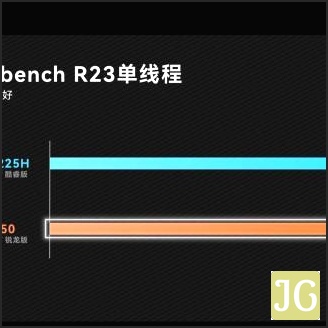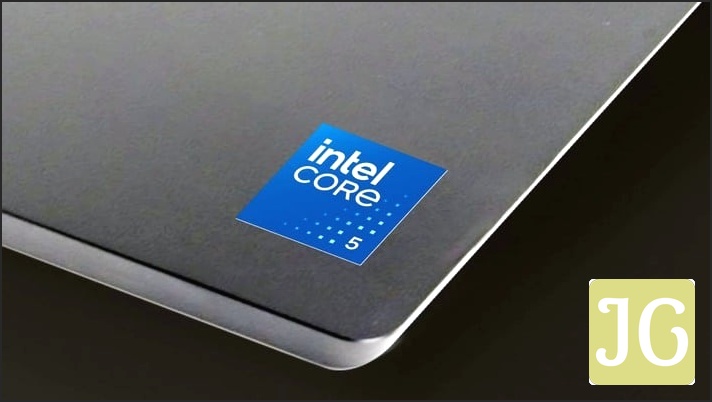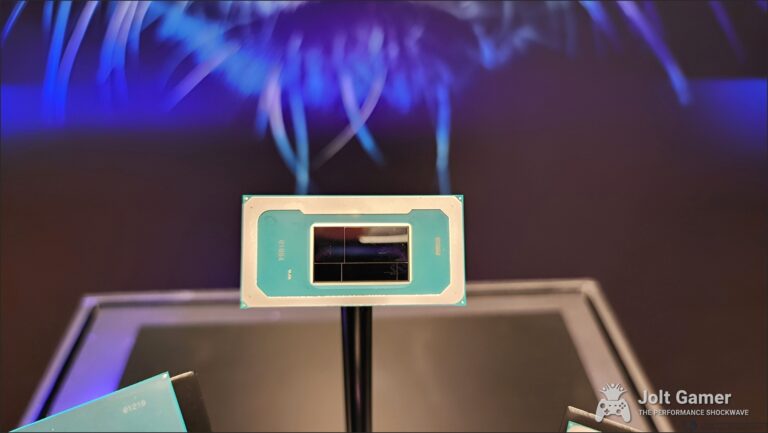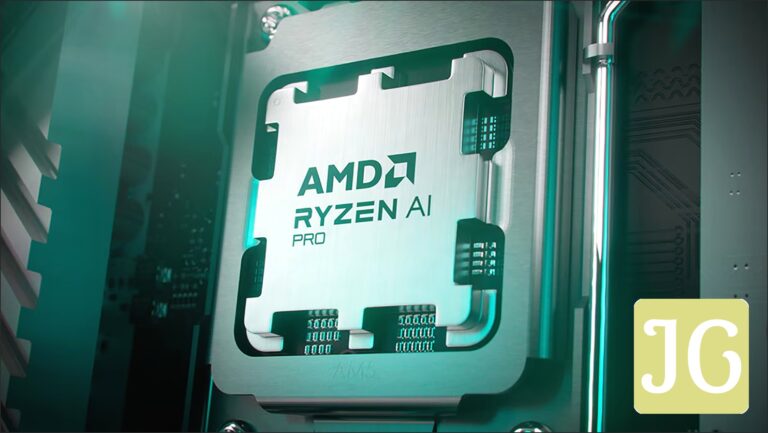For months, the gaming community has been buzzing with whispers and conflicting reports about Intel’s mysterious Bartlett Lake-S processor. Fuelled by tantalizing leaks and a particularly viral YouTube video titled “BARTLETT LAKE-S – Intel’s KILLER Secret BUDGET CPU,” many gamers dared to hope this was the budget-friendly, performance-focused chip they’d been waiting for. But as a veteran observer of the silicon landscape, I’ve learned that reality often diverges sharply from enthusiast dreams. The central question for JoltGamer readers, then, is critical: Is Bartlett Lake-S truly the game-changer for mainstream systems, or is it destined to remain a phantom, forever just out of reach?
Bartlett Lake-S: Myth vs. Reality
Myth:
Bartlett Lake-S is Intel’s next budget gaming king, offering incredible performance at an affordable price for DIY builders.
Reality:
While early rumors positioned Bartlett Lake-S for the budget segment with cheaper prices and LGA 1700 compatibility, official Intel documents and statements from its NEX division explicitly confirm it’s for niche industrial and embedded solutions. There will be no boxed SKUs, meaning DIY gamers probably won’t be able to buy one directly for their next build.
Myth:
The rumored 12 P-core Bartlett Lake-S variant is a sure bet for enthusiast gaming PCs, bringing pure performance back to Intel’s consumer lineup.
Reality:
Intel is indeed testing a 12-performance-core (P-core) variant, currently in early A0 stepping. However, there is no indication whatsoever that this model is destined for the mainstream gaming market. Its design priorities lean towards reliability and efficiency for specialized applications, not peak gaming performance, contrasting sharply with typical gaming-focused CPUs.
Myth:
Bartlett Lake-S is a simple rebadge of older Alder Lake or Raptor Lake silicon, offering no real innovation.
Reality:
While Bartlett Lake-S does leverage Alder Lake/Raptor Lake silicon, particularly for its hybrid configurations, the latest details point to a new chip design for the much-hyped 12 Raptor Cove P-core variant. This isn’t just a simple rebadge; it’s a specialized adaptation, albeit one with a very specific, non-consumer target market.
Myth:
Bartlett Lake-S will launch in 2024, making it a viable option for immediate upgrades.
Reality:
Despite some inconsistent leaked date stamps, current projections place the launch of Bartlett Lake-S desktop CPUs in 2025. While hybrid variants might appear earlier, the P-core-only models are anticipated later in Q3 2025, making it a longer wait than some early reports suggested.
Decoding the Silicon: What Bartlett Lake-S Actually Is
At its core, Bartlett Lake-S is a fascinating continuation of Intel’s ‘Intel 7’ process lineage, drawing heavily from the architectural foundations laid by Alder Lake (12th Gen) and Raptor Lake (13th Gen). While Raptor Lake notably enhanced the P-Core architecture from Golden Cove to Raptor Cove, Bartlett Lake-S builds on this, primarily as a specialized offshoot. Intel is pursuing two distinct architectural paths within the Bartlett Lake-S series: pure P-core configurations and hybrid designs.
The P-core only variants are designed to scale up to 12 P-Cores, operating with a Thermal Design Power (TDP) of up to 125W. These are the chips that have captured the imagination of performance enthusiasts, hinting at raw, unadulterated single-thread power. Conversely, the hybrid flavors incorporate a mix of up to 8 P-Cores alongside 16 E-Cores, targeting a more conservative TDP of up to 65W. These configurations, often seen in the Core 200S Edge series, are optimized for efficiency and specific embedded workloads where a balance of performance and power consumption is paramount. Core counts will vary across the stack: Core i9 models will feature 12 P-Cores, Core i7 will offer either 10 P-Cores or an 8 P-Core + 16 E-Core hybrid, Core i5 will see variants with 8 P-Cores, 6 P-Cores + 8 E-Cores, or 6 P-Cores + 4 E-Cores, while Core i3 will be 4 P-Cores, and a base Core will have 2 P-Cores. This segmentation underscores its versatile, albeit non-consumer, application.
| SKU Tier | Core Configuration | P-Core Base/Boost (GHz) | E-Core Base/Boost (GHz) | TDP (W) | Memory Support | PCIe Support | Target Market |
|---|---|---|---|---|---|---|---|
| Core i9 (Rumored) | 12 P-Cores (A0 Stepping) | Up to 6.0+ (Rumored) | N/A | Up to 125W (Sustained >250W rumored) | DDR5-5600 | PCIe 5.0 | Uncertain (Enthusiast interest, but likely OEM/Embedded) |
| Core i7 (Confirmed OEM) | 8 P-Cores + 16 E-Cores (e.g., Core 7 251E) | 2.1/5.6 | 1.6/4.4 | 65W | DDR5-4000 (up to 128GB) | PCIe 5.0 | OEM/Embedded (e.g., Medical Imaging, Networking) |
| Core i7 (Rumored) | 10 P-Cores | TBD | N/A | Up to 125W | DDR5-5600 | PCIe 5.0 | OEM/Embedded |
| Core i5 (Confirmed OEM) | 6 P-Cores + 4 E-Cores (e.g., Core 5 211E) | 2.7/4.9 | 2.0/3.7 | 65W | DDR5-4000 (up to 128GB) | PCIe 5.0 | OEM/Embedded (e.g., Industrial Automation) |
| Core i5 (Rumored) | 8 P-Cores | TBD | N/A | Up to 125W | DDR5-5600 | PCIe 5.0 | OEM/Embedded |
| Core i5 (Rumored) | 6 P-Cores + 8 E-Cores | TBD | TBD | 65W | DDR5-5600 | PCIe 5.0 | OEM/Embedded |
| Core i3 (Confirmed OEM) | 4 P-Cores (e.g., Core 3 201E) | 3.6/4.8 | N/A | 65W | DDR5-4000 (up to 128GB) | PCIe 5.0 | OEM/Embedded (e.g., Banking, Thin Clients) |
| Base Core (Rumored) | 2 P-Cores | TBD | N/A | Up to 65W | DDR5-5600 | PCIe 5.0 | OEM/Embedded |
The OEM Lock-In: Why Bartlett Lake-S Will Likely Elude DIY Gamers
The crucial distinction for Bartlett Lake-S, and why it’s unlikely to grace your next gaming rig, lies in its primary target market. Intel’s NEX division, the architects behind this series, has explicitly positioned Bartlett Lake-S for niche industrial and embedded solutions. This means you won’t find these chips on retail shelves; there will be no boxed SKUs for direct consumer purchase. Instead, they are designed to be exclusively integrated by Original Equipment Manufacturers (OEMs) into specialized business and industrial systems.
Companies like Kontron, a global leader in IoT and Embedded Computer Technology, and Congatec are already featuring Bartlett Lake-S in their product lines. Kontron, known for its rugged hardware platforms and high-performance embedded computing (HPEC) applications, includes Bartlett Lake-S in its Computer-on-Modules. Similarly, Congatec has launched COM-HPC Client Size C modules powered by Bartlett Lake-S Core 200 processors, specifically designed for ‘high-performance computing in compact embedded devices.’ These modules target demanding applications such as medical imaging, networking, edge computing, and banking. This OEM-centric strategy prioritizes reliability and efficiency over the raw, unbridled performance typically sought by gamers, firmly cementing Bartlett Lake-S outside the DIY enthusiast space.

LGA 1700’s Last Stand? Compatibility and Caveats
One intriguing aspect of Bartlett Lake-S is its compatibility with the existing LGA 1700 socket. This means, in theory, these chips could offer plug-and-play support for 12th, 13th, and 14th Gen motherboards (like Z690 and Z790) via simple BIOS updates. For a platform nearing the end of its lifecycle, this backward compatibility is a welcome, if bittersweet, gesture, potentially extending the utility of current LGA 1700 systems.
However, this compatibility comes with significant caveats, especially for the alluring all-P-core variants. These chips are rumored to have substantial power and thermal demands, with sustained draws potentially exceeding 250W and PL2 peaks hitting 300-350W. Such power hungry designs necessitate mission-critical case airflow and high-quality VRMs on your motherboard. A 280mm AIO cooler might be the absolute minimum for sustained performance, and even high-end air coolers will offer little headroom. Crucially, budget B-series motherboards are highly unlikely to cope with these demands, making them unsuitable. While the LGA 1700 socket remains, the underlying power infrastructure of many existing boards simply isn’t built for Bartlett Lake-S’s extreme appetite, and users should be wary of potential issues like lagging QVL lists or buggy BIOS revisions during updates.
Community Sentiment Snapshot
Dominant Emotions:
Disappointment
Interest
Representative Quotes:
- “Just give me 12P cores with AVX512 damn intel.”
- “The Bartlett Lake-S hybrids are just Raptor Lake Refresh Refresh and Alder Lake Refresh Refresh Refresh and nothing known points at them being different from what is already known.”
- “My 12900KS still serves me fine and will for the far future, but it would be a nice backup chip or even a mini homeserver chip. 12p cores, spread across several vms for several server related tasks out of your own home. My dream.”
Overall Summary:
The PC gaming community is largely frustrated and resigned to Intel’s Bartlett Lake-S being another uninspired rebrand lacking desired features like AVX-512 and consumer availability, though a niche segment expresses interest for specific server-based applications.
Bartlett Lake-S: The Bottom Line for JoltGamer Readers
For the average JoltGamer reader, the bottom line on Intel’s Bartlett Lake-S is clear: temper your expectations. While the prospect of a 12 P-core processor with extreme clock targets is undeniably exciting, the reality is that Bartlett Lake-S is not designed for the mainstream DIY gaming market. It is an OEM-exclusive product, primarily aimed at industrial and embedded solutions, meaning you won’t be able to simply buy one off the shelf.
Instead of holding out for this elusive chip, your focus should remain on readily available or confirmed consumer-focused options. For top-tier gaming performance, AMD’s X3D chips, like the Ryzen 7 7800X3D or Ryzen 9 7950X3D, continue to deliver exceptional in-game minimum frame rates and frame-time consistency thanks to their 3D V-Cache. On Intel’s side, your attention should be on the upcoming Arrow Lake-S, which is slated to be their true next-gen desktop offering for enthusiasts, albeit on a new LGA 1851 platform. While Bartlett Lake-S is a fascinating technical development for specialized applications, it’s highly unlikely to be the mainstream gaming option you’re looking for in your next upgrade.
Key Takeaway for Gamers: Don’t Hold Your Breath
Intel’s Bartlett Lake-S is a technically intriguing processor with specific industrial and embedded applications, but it is unequivocally *not* the next mainstream gaming CPU. For your next upgrade, focus on readily available or confirmed consumer-focused options like AMD’s X3D series or Intel’s upcoming Arrow Lake-S. Don’t wait for a chip that won’t appear on retail shelves.




